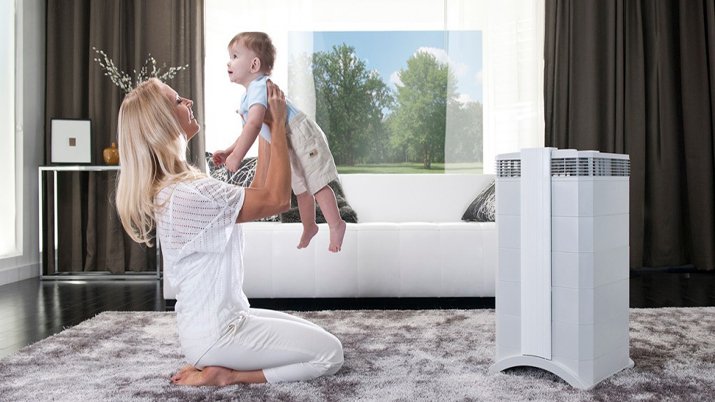The best air purifiers are an excellent tool for eliminating indoor odors and reducing allergens. Simply put, an air filter captures pollutants and expels clean air, much like a tree absorbs carbon dioxide and releases oxygen.
However, just like trees, the types of filters are legion. Carbon pre-filters capture hair and some odors; volatile organic compound (VOC) filters trap odors and airborne pathogens, and HEPA filters reduce indoor allergens such as dust and pollen.
However, air filters are only the tip of the purification iceberg. Some air purifiers use ionizers and UV light, but you may not know what these technologies actually do.
This article will give you simplified explanations and warn you about the potential dangers of both. We do not want to scare you away from air purifiers that use ionizers and UV lights, but we do want you to understand the risks and be careful when you use them.
Ionizers
Many of the air purifiers that we reviewed include an optional ionizer. In fact, some of our favorite purifiers use ionizers to increase the cleaning power. But what does this technology do? Without confusing you with too much chemistry, oxygen is a neutral element that loves to change its charge. An ionizer uses an electromagnetic charge to add or remove electrons from oxygen atoms, making the oxygen particles either positively or negatively charged as they leave the ionizer.
Ionized particles are far more common in the upper atmosphere, and the air we breathe tends to combine oxygen molecules with several other elements. In theory, after the oxygen passes through the air filter, it detaches from other particles and looks for a new particle to bond with. The ionizer gives the outgoing air an electromagnetic charge so that it will bond with other particles more easily. Then, when the charged ion passes through the air filter a second time, it is easier to capture.
The potential danger with this is that humans don't usually breathe ionized air. If an oxygen molecule bonds with two others, it becomes O3, or ozone, and ozone has been linked to irritating airways and exacerbating breathing-related problems.
The best way to use an ionizer is with an operation scheduler or timer. This way, you can run your air purifier and ionizer while you are out of the house. Then, the charged particles will bond with other compounds without damaging your lungs. However, if you are sensitive to ozone, you should avoid ionizers entirely.
UV Lights
When an air purifier uses a UV light, it promises to eliminate airborne pathogens. Many point to the UV light hospitals use to purify equipment. In theory, ultraviolet rays will kill the microorganisms passing through your air filter.
However, this type of purification cleans as much air as your television. Most UV light cleaners are ozone free and will not damage lungs, but they also will not actually kill the pathogens. Air purifiers zip air through the filters and out the vents, creating air circulation in a room. Hospital UV lights are effective in killing particles by reducing or eliminating airflow.
Also, air purifier manufacturers do not usually explain what kind of UV technology they used, and some of these technologies produce high volumes of ozone. Ozone is not an effective or safe way to eliminate airborne pathogens. Since UV lights are not effective purification methods and could generate ozone, it is best to avoid air filters with this technology, or turn it off.
In summary
Air purifiers are an excellent tool in the fight against indoor allergens and pathogens. However, you should pay close attention to the technology the air filter uses.

